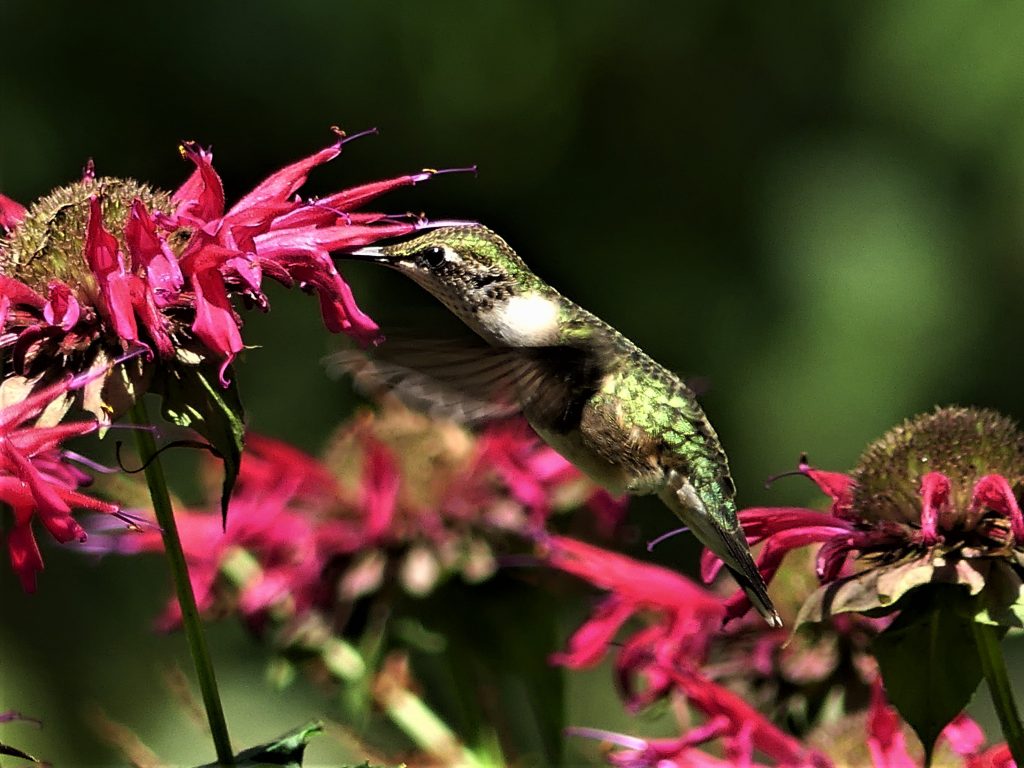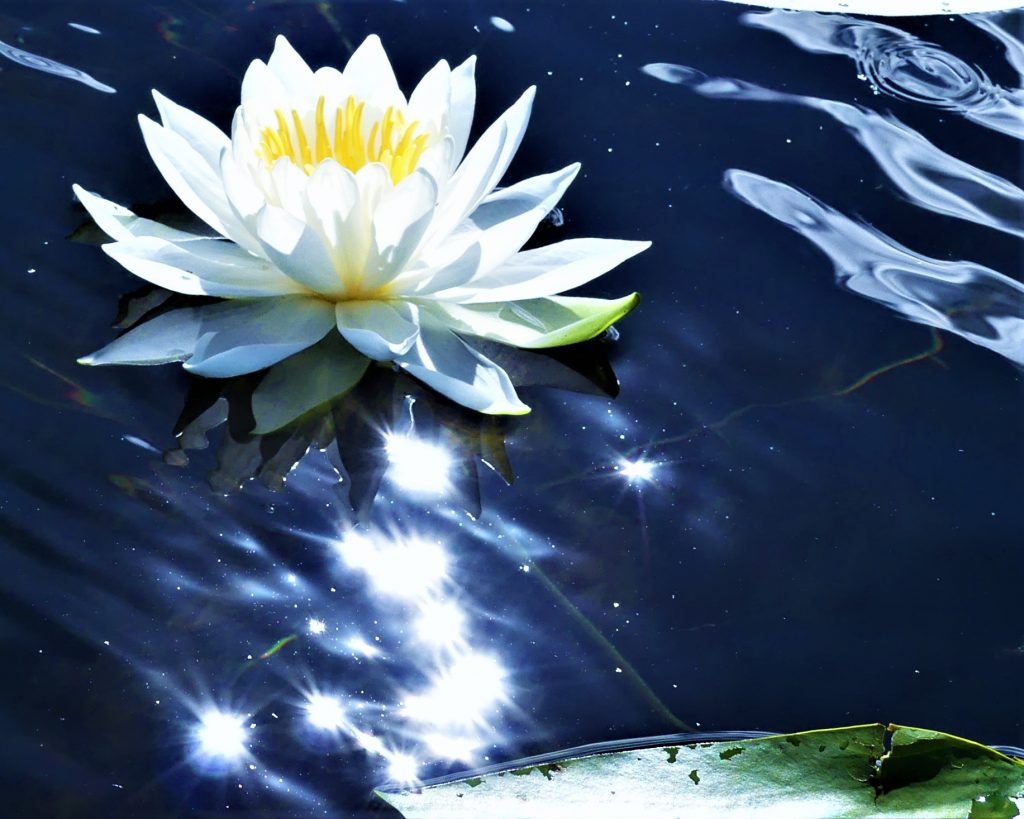Yes, I have a book coming out in November! People seem excited about the hundred-plus color photos, but it also has about 60,000 words. That’ll be about 300 pages. So I’m sharing parts of my introduction here, for a better picture of what’s coming. You’ll be able to buy it from my website, but I hope you’ll come to a launch or reading so I can sign it for you and see your beautiful faces. Stay tuned!
INTRODUCTION (Abridged)
The group of seven teens who came to help me pull buckthorn said they felt like they were at Snow White’s cottage in the enchanted forest. But no, I didn’t grow up dreaming of being a princess in a castle with a handsome prince. I dreamed of being Jane in the jungle with Tarzan. As I got a little older, it was Jane Goodall who inspired me. I still haven’t made it to the jungles of Africa, but I’ve been blessed to spend considerable time in the woods, and now live in my own little forest. I’m no Jane, but people say I have extraordinary connections to animals. I certainly feel close to Mother Nature, and I hope the stories that follow will encourage others, young and old, to slow down and explore her magic.
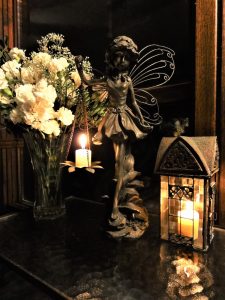
The other part of my life that some find unusual is my passion for being green and frugal, especially by reusing, and often transforming, all kinds of “stuff.” You might call it junk. When people hear of my “Magic Dumpster” or how I often seem to “manifest” what I need and find it on the curb, they think I must lead an enchanted life. That kind of enchantment may be harder to understand or to express, but it’s hardly new. I like the way this guy put it a couple of centuries ago.
To live content with small means; to seek elegance rather than luxury, and
refinement rather than fashion; . . . to study hard, think quietly, talk gently, act frankly;
to listen to stars and birds, to babes and sages, with open heart; to bear all cheerfully,
do all bravely, await occasions, hurry never.
In a word, to let the spiritual, unbidden and unconscious, grow up through
the common.
This is to be my symphony.
~ William Henry Channing (1810-1884)
American philosopher, writer, and Unitarian clergyman
I didn’t always know I was unusual. In July of 2005, my friend Al asked me to speak to his graduate engineering class. I asked, “About what? I’m not an engineer!”
“About your lifestyle. You’re one of only two people I know who live the way you do, and I want you to inspire my students to think outside the box.” He said they were talking about sustainable communities, and I’d fit right in.
Al was right about me and the box. I lived outside the box of American consumption. I’d jumped off the flashing Ferris wheel—the ups and downs and rounds and rounds of sacrificing time to make money to spend on the next big thing. I never made much money as a teacher or part-time librarian, but I lived (and still live) happily below my modest means by relishing used and found objects. I guess I had engineered a free and joyful life for myself by measuring my needs, assessing my strengths, and bridging the gaps with the buttress of my values. So I spoke to the engineers, and they heard.
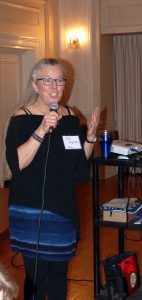 Since then, I’ve been speaking to all kinds of groups. I delight in sharing that many, if not most, of my belongings have been free, or nearly so. Whether rescued from the curb, given to me, or bought at a rummage sale or thrift shop, almost everything is secondhand. Sure, I buy new undies, but even those I often find, still in the package but for much less, at the thrift store. I’m typing this on a store-bought laptop, but I’ve also found good electronics at the recycling center. And because I recycle, compost, and donate, I generate almost no waste.
Since then, I’ve been speaking to all kinds of groups. I delight in sharing that many, if not most, of my belongings have been free, or nearly so. Whether rescued from the curb, given to me, or bought at a rummage sale or thrift shop, almost everything is secondhand. Sure, I buy new undies, but even those I often find, still in the package but for much less, at the thrift store. I’m typing this on a store-bought laptop, but I’ve also found good electronics at the recycling center. And because I recycle, compost, and donate, I generate almost no waste.
It’s fun to see people in the audience smile as they respond. “I got this classy jacket at a thrift store for only three dollars!” “We grow our own organic vegetables!” “I built a compost bin from scrap wood!”
I’m so encouraged to see people open their eyes to the global aspects of consumption and begin to ask where things come from and where they go when we’re through with them. “Ah!” they realize, “Concern for the environment fits nicely with my desire to stop living beyond my means. They are two sides of the same coin—the one I’m keeping in my pocket.” While I teach, I also learn, and am challenged to examine my own “greenness” more closely.
Rocking in the old wooden chair on the high, tiny deck I call my “tree house,” I feel the gentle breeze of wings on my cheek. A hummingbird, its scalloped tail unfurled, hovers at the feeder, fueling up for the thousand-mile journey he must make to survive the winter. I marvel at his efficient use of a bit of nectar and wish him well on his autumn flight. In sharp contrast to his prudent sipping of the resource is the community of ants in the feeder. They drift in various stages of sugar intoxication, blind to the warning in the dead bodies floating around them. The sweet life, and its irresistible abundance, seduces them until they find themselves drowning in their own endless consumption.
This scene reminds me of the daily news. Nearly 80 percent of all Americans working full time (and nearly 10 percent of those making $100,000 or more) live paycheck to paycheck. Plastic, both minuscule and monstrous, trashes our oceans. Our dependence on oil continues to threaten our security and our environment. Industry poisons our air, water, and food as it strives to fulfill our every desire, even the ones we didn’t know we had. So I feel compelled to shine a light on the pseudo-delicious red plastic feeder. But the bulk of the scenes I share are bright escape routes from its sticky syrup.
I don’t claim to be an expert on anything except my lifestyle. I have no desire to tell anyone else how to live, but only to offer proof that there are alternatives to following the flock. I hope my humble examples offer strength to resist the barrage of consumer pressures surrounding us. There are many changes we can make and still be, well—normal. Sort of normal. But definitely happy. Very happy.
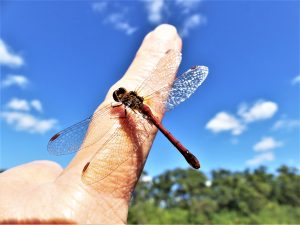 One September day I was in a funk, feeling pressured and frustrated by some of life’s challenges. Since I’d promised to check on the neighbor’s cats, I took a break and paddled my canoe the short distance to their house across the lake. On the way back, I was further saddened by the dragonfly I found, apparently drowned, in the canoe. But lifting it out with my finger, I realized it was still alive, barely. I almost always have my camera, just in case an eagle appears, but today it was my excuse to pause and take pictures as this tiny creature slowly recovered, wiping its colossal eyes while its wings went from drenched to gossamer. When it finally took off into the blue sky, I realized my mood had also revived.
One September day I was in a funk, feeling pressured and frustrated by some of life’s challenges. Since I’d promised to check on the neighbor’s cats, I took a break and paddled my canoe the short distance to their house across the lake. On the way back, I was further saddened by the dragonfly I found, apparently drowned, in the canoe. But lifting it out with my finger, I realized it was still alive, barely. I almost always have my camera, just in case an eagle appears, but today it was my excuse to pause and take pictures as this tiny creature slowly recovered, wiping its colossal eyes while its wings went from drenched to gossamer. When it finally took off into the blue sky, I realized my mood had also revived.
I resumed paddling but was stopped by what appeared to be the last water lily of the summer. The low sun and high winds created a magical scene of dancing light. After taking (way too many) pictures, I had to get back to work, but my heart had gone from embattled to enchanted. When I told my friend Susan, she said, “That’s the name of your book.”
